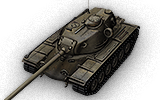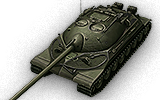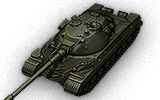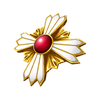Armor is a vital aspect of World of Tanks, as every shot your armor deflects is a hit that isn’t taking a sizable chunk out of your vehicle’s hit points. And which tank class has quite as much armor as heavy tanks?
Today, we’ll be discussing the three most recommended heavy tank lines that you should be aiming for if you want to master the art of survivability on the battlefield. The techniques that these lines will teach you will translate to a variety of other vehicles and will keep you alive longer, which will boost your performance on the battlefield!
For this guide we will exclude autoloading heavy tanks as these play more of a supporting role and often do not rely solely on armor. We will also be discussing the tanks in their top configuration.
The T110E5 Line
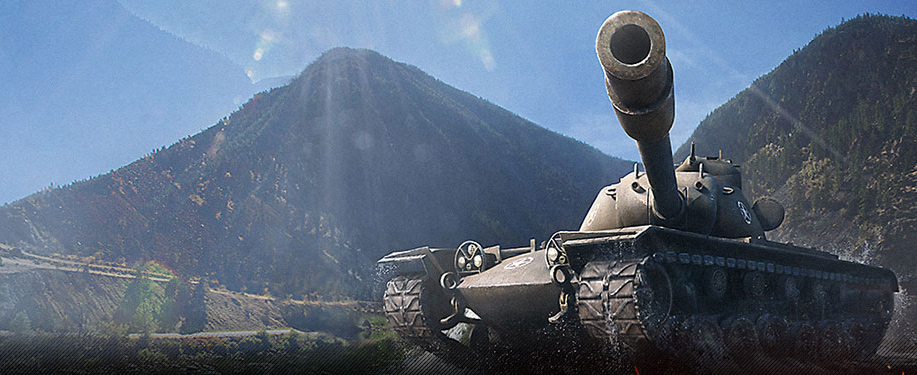
Pros |
Cons |
|---|---|
|
|
When it comes to American heavy tanks, the
 VII
VII
T29
at Tier VII is an absolute pleasure to play. A sturdy turret and excellent gun depression, coupled with a reliable gun, make it a fantastic tutor for a technique known as ‘hull-down’. This involves hiding the hull of the tank from the enemy, either behind a ridgeline or using cover, and only exposing the turret of the vehicle to enemy fire. By forcing the enemy to shoot at the stronger parts of your tank, you can significantly reduce the amount of damage taken when peeking out of cover to take shots at the enemy.
While the armor on the
 V
V
T1 Heavy Tank
and
 VI
VI
M6
are certainly nowhere near as reliable, they both have 10 degrees of gun depression and a relatively small-profile turret. Use these tanks to hone your skill at cresting ridgelines as you make your way to the T29!
At Tier VIII, the
 VIII
VIII
T32
utilises a smaller turret and fantastic gun depression similar to its predecessors, but still incorporates the strong turret style of the T29. This makes it a small and well armored target when playing hull-down.
Moving onto the higher tiers, the
 IX
IX
M103
and
 X
X
T110E5
sacrifice a small amount of gun depression and armor for higher caliber guns with better penetration. Players should note that the ‘invincible turrets’ of the mid-tiers have been replaced here with obvious weak spots, so they should focus on playing hull-down, minimising exposure times, and baiting shots before returning fire.
Overall, the T110E5 line is a great introduction to the technique of playing hull-down and can be a rewarding and enjoyable experience. Players not keen on the higher tiers should look to stronger alternatives such as the
 X
X
Super Conqueror
if they wish to continue the ‘invincible turret’ playstyle of the T29 and T32.
The E 100 Line
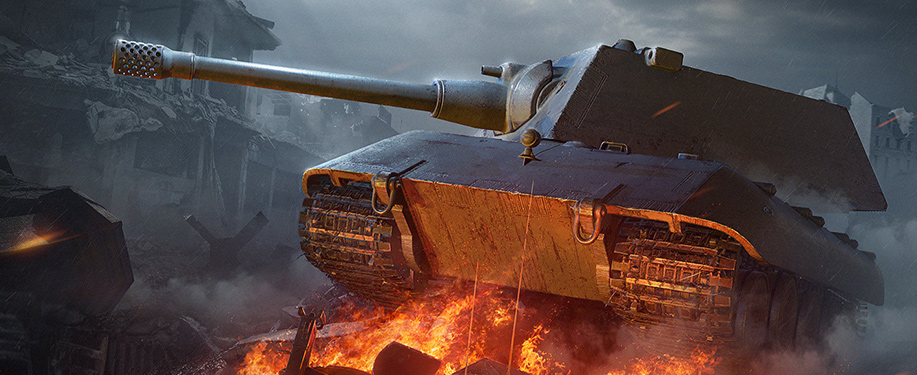
Pros |
Cons |
|---|---|
|
|
Unlike their American counterparts, the German heavy lines focus on flat armor angles, usually with high armor thickness or high HP. This unlocks the opportunity to learn three new techniques: sidescraping, armor angling and HP trading. While all tanks in this line can teach you these concepts in some form, a great mentor is the legendary King Tiger (
 VIII
VIII
Tiger II
) at Tier VIII. While the
 IX
IX
E 75
and
 X
X
E 100
are far more effective at these techniques, I am suggesting the King Tiger purely as the grind is a lot faster.
Sidescraping is a technique that relies on strong side armor, which when angled out from cover can be used to deflect enemy fire. Be warned though, over-angling makes for an easy shot into your side for the enemy. Also beware of HEAT shells, which are far more effective at sidescraping targets without spaced armor. You can start practising this technique even from Tier VI at the
 VI
VI
VK 36.01 (H)
!
Driving your tank directly at the enemy often means that you’re exposing your flattest armor at them. Angling your armor can increase its effective thickness, which can be used to bait shots and block damage while advancing. The E 100 at Tier X not only has to rely on angling the hull, but also the turret! Despite this, with both angled perfectly, the E 100 is a very difficult tank to penetrate and is a staple of defensive play.
HP trading is the key to success in World of Tanks, and involves minimising the amount of damage that your tank is taking (by sidescraping and angling) while also returning fire to deal more HP damage than your opponent. Sometimes it’s not possible to deflect shots, and so to maintain your advantage you either need to deal more damage per shot than the enemy, or in the case of the Tiger I, return TWO shots for every one received. Tiers VI and VII of the line rely on DPM to win trades, while Tiers IX and X rely on alpha damage. The King Tiger is the middle ground between the two lines, which encourages you to use your armor effectiveness instead of simply relying on rate of fire or alpha.
The E 100 line is a stepping stone to mastering various techniques. Refine your trades in Tier VI - VIII, then start using armor techniques from Tier VIII - X to deflect incoming fire with your superior German steel!
IS-7 / Object 277
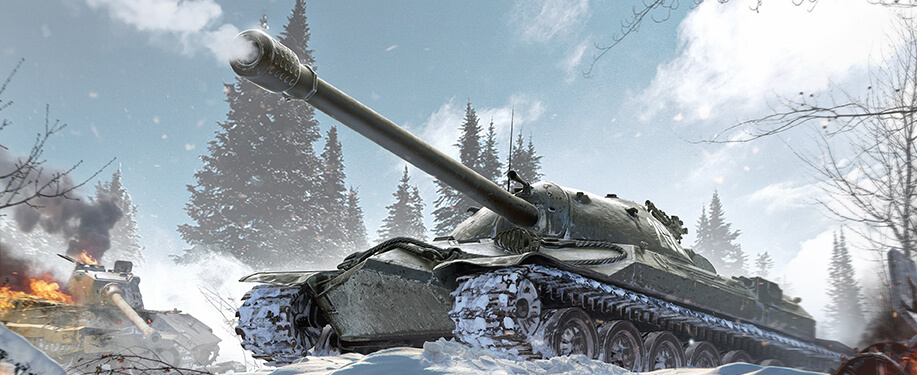
Pros |
Cons |
|---|---|
|
|
When it comes to Soviet heavy tanks, you’re spoilt for variety with a total of FIVE Tier Xs to unlock. While it can be daunting knowing where to go, the
 X
X
IS-7
and
 X
X
Object 277
time and time again become the go-to goal for new players. Why? It’s all about the combination of mobility and armor. While the Soviet heavies don’t have the gun depression of the American or British heavies, they make up for it with incredibly durable turrets starting from Tier VIII. Because of this, I strongly recommend all new players to go for an IS-3.
Your journey begins with the
 V
V
KV-1
at Tier V, and what a gem of a tank it is. If you don’t want to grind up to the higher tiers to practice angling, side-scraping and trading, the KV-1 is your go-to tank. While the 85mm and 57mm are viable guns, I enjoy firing HEAT in the 122mm and while expensive, if you can connect the shells, it’s an incredible experience.
The dud of the line is the
 VI
VI
KV-1S
at Tier VI. This tank used to be a Tier V, and only has a marginally better 85mm than the KV-1. Take this opportunity to start baiting shells with your tracks and returning fire. Just make sure you’ve got a repair kit handy unless you want to be a sitting duck.
At Tier VII, the
 VII
VII
IS
is all about the 122mm gun. The D-25T has 390 alpha damage, and at Tier VII it is incredibly intimidating for most enemy targets. While the armor can hold up, don’t rely on it; instead, trade with the enemy, as you will often deal double the amount of damage they do per shell. Be warned that the gun, while powerful, is hard to handle, and can lack in penetration against better-armored targets.
The
 VIII
VIII
IS-3
welcomes you with open arms at Tier VIII with a mobility buff and a very strong turret. The BL-9 122mm is a much-appreciated upgrade that can deal with most targets it encounters. Players should look to take aggressive positions and utilise available cover to hide the hull. While playing hull-down, the IS-3 has very few weak spots and can systematically shut down an enemy team. Another new addition is the ‘pike-nose’ hull. While it can be strong when pointed directly at the enemy, it can prove a flat and easy target to penetrate when angled towards the enemy.
Tier IX presents you with a choice. Did you prefer the mobility buff of the IS-3, or the armor buff? Your answer determines your next choice.
- The
 IX
IX
T-10 increases your mobility to a 50km/h top speed while upgrading the IS-3 you know and love to a competitive level at Tier IX.
- Alternatively, the
 IX
IX
Object 257 offers an improved pike nose and incredible sidescraping potential which most players will enjoy.
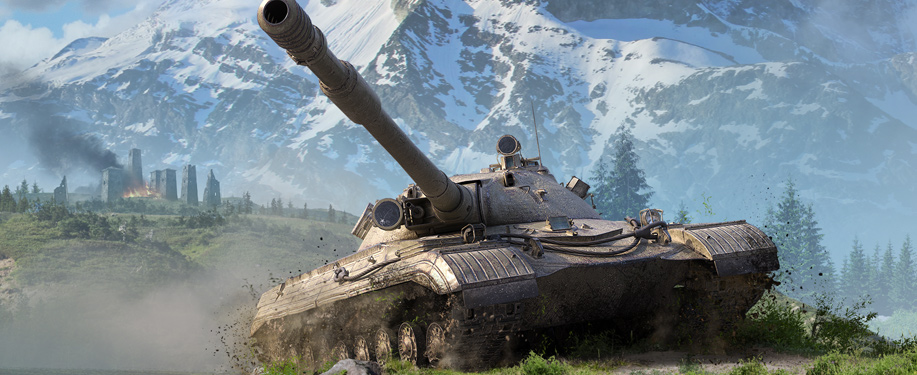
When you finally reach Tier X, you'll find that each of the two tank options expresses a very different philosophy.
- The
 X
X
IS-7 with its pike nose and incredible turret refuses to let the enemy take a single hit point away from you when playing hull-down, but don’t be fooled by its top speed–you often won’t have the engine power to reach it unless you're driving downhill.
- The
 X
X
Object 277 is much more reliable in terms of mobility, and trades off some turret armor for a HEAT shell with incredibly high penetration. It prefers to push the attack, and jump from cover to cover while advancing.
Mastering these Soviet heavies allows you to take control of the battlefield early, hold position while hull-down, and punish enemy advances hard. Most clans will require a Soviet heavy as an entry ticket into Advances and Clan Wars, and it’s not hard to see why–they are great for learning the fundamentals of brawling heavy tanks, which is a desirable skill in competitive play.
